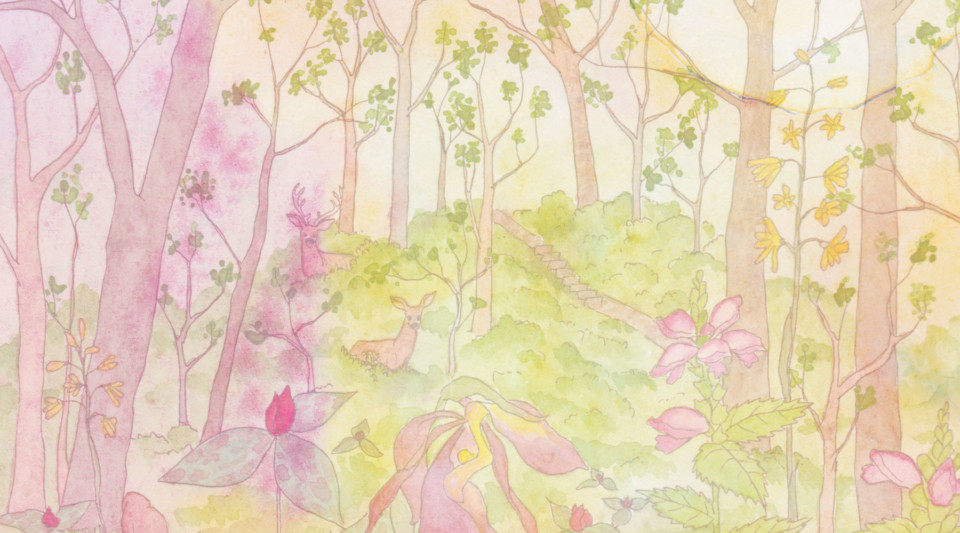
How to Survive the Future
How to Survive the Future is a podcast created by Alex Chambers and Allison Quantz in partnership with Indiana Humanities.
Apple Podcasts | Spotify | Stitcher | Pocketcast | Youtube
Episode 1: Nightfall Farm
Alex visits a farm in Southern Indiana – Nightfall Farm – to talk with the farmers Liz and Nate Brownlee about climate change and crawdads. And all the rain. | Discussion Guide
Episode 2: Bloomington Birth Center
Katie is a criminology professor and a doula. She’s also the mother of two sons. They’re grown men at this point, but they still do dinner together almost every week – along with her older son’s wife, and her husband. This episode starts with some news from Katie’s daughter-in-law. | Discussion Guide
Episode 3: McCormick’s Creek State Park
Ellen retired from her work as an ecologist decades ago, but she still walks in her favorite state park. One spring day, she takes Alex along trails that keep getting wider to search for disappearing spring ephemerals: among others, guyandotte beauty, great waterleaf, and the puttyroot orchid, which can be hard to find. | Discussion Guide
Episode 4: Martinsville
When his daughters were teenagers, Chuck and his family lived close to downtown Martinsville. That was also the time – they found out later – that the city’s drinking water was most contaminated with toxic chemicals.Chuck’s dreams are with his grandson now, an early-career jazz musician making a life in a city where things are starting to look up. | Discussion Guide | Resources
Episode 5: The Near West Side
When Alex said his neighborhood needed speedbumps to deal with the cops speeding through, poet Ross Gay said, “Build your own. That’s what we did.” Ross is in his nineties now, but he’s as much a part of the neighborhood as ever. | Discussion Guide
About the Podcast
In How to Survive the Future, we ask everyday people to imagine a world where they have made it through the challenges of the present and faced the pain of the past and then tell us what life is like after that. Farmers, poets, parents, organizers and others imagine how their lives, and the landscapes around them, will be different than they are now—hopefully for the better, though it’s never that simple. From the interviews, we create sound-rich “imaginative documentaries” that explore real stories of the past and possible stories of the future. The stories teach us about history and society, show us struggles personal and political, and offer us a chance to reflect on how the state of the world, fixed and inevitable as it may seem, is always up for grabs.
How to Survive the Future is a program of Unearthed, a multiyear thematic initiative from Indiana Humanities that encourages Hoosiers to discover and discuss their relationships with the natural world.
Curious about the podcast’s origins? In this blog post, executive producer Alex Chambers reflects on how the podcast got its start.
About the Creators
Alex Chambers, Executive Producer
Alex is a writer, educator, and radio producer in Bloomington, Indiana. He produces and hosts WFIU’s Inner States, a weekly arts and culture show; he produced the Hoosier Young Farmers Podcast; and he teaches podcasting at the Indiana University Media School. His PhD dissertation, Climate Violence and the Poetics of Refuge, and his book of poems, Binding: A Preparation, are both about how we make it through, together
Allison Quantz, Executive Editor
Allison is a radio and podcast producer and consultant living in Bloomington, Indiana. She is senior producer at Virginia Humanities’ radio show and podcast, With Good Reason. She launched The Briefing from SiriusXM in 2015 and produced it until late 2017. In 2018 she helped launch and began producing The Growing Edge podcast with Carrie Newcomer and Parker Palmer. Her work has been heard on BackStory with the American History Guys, WFIU, Virginia Public Radio, Word of Mouth, Distillations and PRX Remix.
Ileana Haberman, Artist
Ileana Haberman is an embroidery and comic artist living in Bloomington, IN, most interested in explorations of queerness, body, grief, and self. Many of her inspirations hit while hiking the hills of Southern Indiana with her young dog, Willow.
Music
The theme song is “Soft Skin” from Elastic by Amy O. Additional music by airport people, Amy O from her album Elastic, Backward Collective and Last Ledges, and Ramón Monrás-Sender.